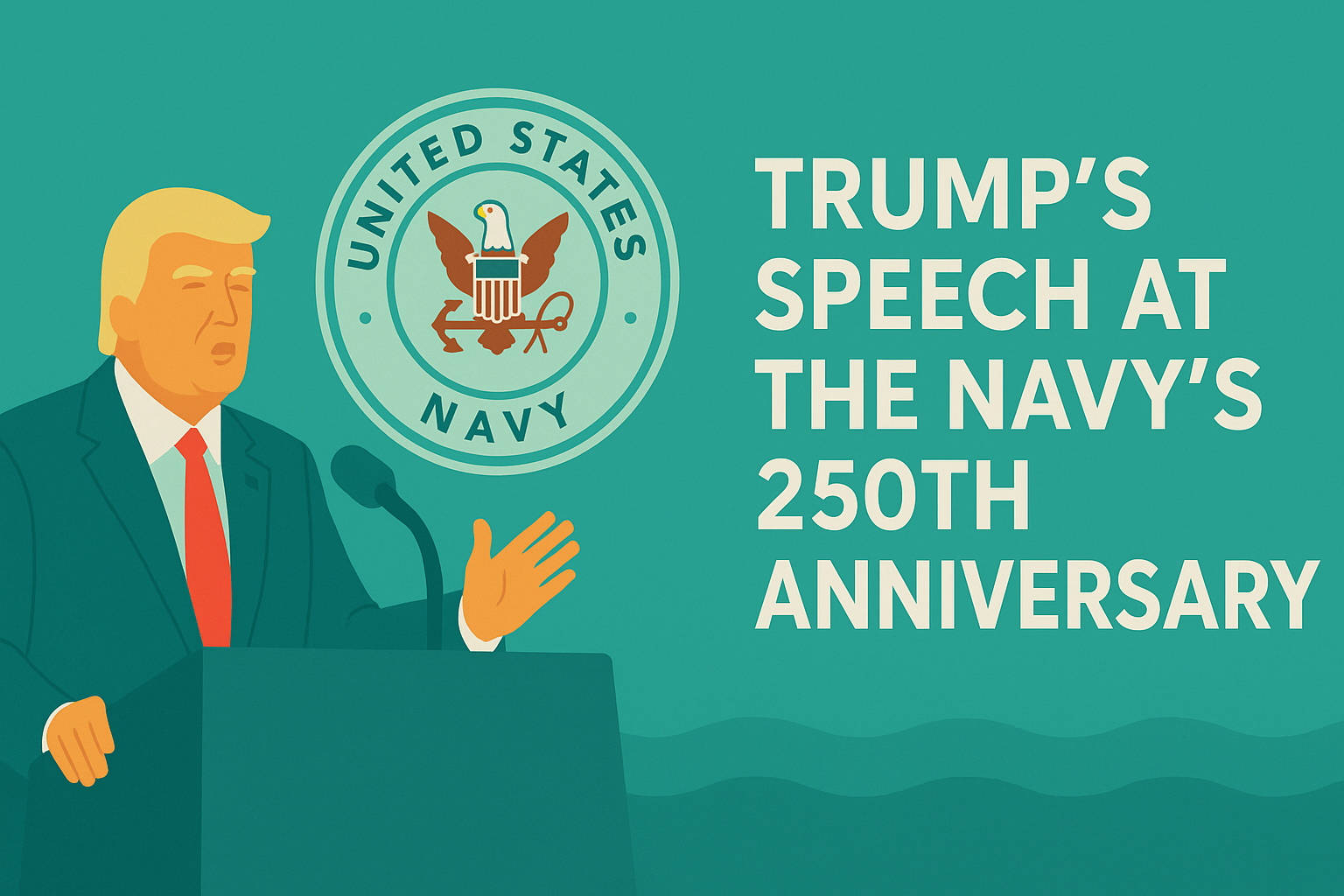Wrote By:Global Economist 2025/10
1. Historical Context and Significance
On October 5, 2025, President Donald Trump delivered a keynote speech in Norfolk, Virginia, commemorating the 250th anniversary of the United States Navy. The event went beyond a ceremonial occasion—it served as a platform to project military pride, reinforce domestic political narratives, and send strategic signals to allies and rivals across the globe.
2. Three Core Themes of the Speech
(1) Tradition and Pride of the Navy
- Emphasized the Navy’s two and a half centuries of service and sacrifice.
- Evoked imagery such as “Titans of the Sea” to underscore heroism and continuity.
- Supported by live demonstrations (paratrooper descents, ship maneuvers), providing visual persuasion that reinforced rhetoric.
(2) Military Strength Coupled with Economic Policy
- Announced pay raises for all service members, addressing recruitment and morale.
- Promised a $1 trillion defense investment plan, including revitalization of shipyards.
- Tied naval expansion to “American-made” shipbuilding, blending industrial revival with defense strategy.
(3) Political Confrontation and Blame Shifting
- Framed the ongoing government shutdown as the fault of Democrats.
- Highlighted the irony that sailors serve without pay, blaming political opposition.
- Reinforced Trump’s populist narrative of “protecting the people while Washington fails.”
3. Implications for Foreign Policy and the Indo-Pacific
U.S.–China Strategic Rivalry
- Naval buildup explicitly tied to deterrence in the South China Sea and Taiwan Strait.
- Sent a message of sustained American maritime dominance in contested waters.
Signals to Allies and Partners
- Implied deeper coordination with Japan, Australia, and India under the Indo-Pacific framework.
- Served as both reassurance (“America will not retreat”) and a precursor to burden-sharing demands.
Global Messaging
- Framed U.S. naval presence as a guarantor of maritime security and counter-narcotics efforts.
- However, the hardline tone risks reinforcing perceptions of U.S. militarism rather than cooperative leadership.
4. Long-Term Vision for Naval Power
- Industrial Base Revitalization
– Rebuilding shipyards, strengthening domestic defense manufacturing. - Shift from Quantity to Quality
– Investments in next-generation carriers, submarines, and unmanned systems to maintain technological superiority. - Integration with Regional Strategy
– Protecting Indo-Pacific sea lanes, securing global energy and resource flows. - Human Capital Investment
– Higher pay and benefits to counter declining enlistment rates and boost recruitment.
5. Rhetorical and Stylistic Analysis
- Heroic Rhetoric: Phrases like “they carry saltwater in their veins” dramatized naval sacrifice.
- Binary Framing: Cast Democrats, foreign adversaries, and criminal cartels as enemies vs. the Navy and the American people as heroes.
- Visual Staging: Troop descents and fleet maneuvers gave physical weight to the speech.
- Memorable Cadence: Short, repetitive, slogan-like phrasing reinforced key messages for mass audiences.
6. Evaluation and Risk Assessment
Strengths
- Strengthened the symbolic link between the military and national pride.
- Achieved dual objectives: deterrence abroad and populist mobilization at home.
- Showcased “economic nationalism” by connecting shipbuilding jobs to defense spending.
Risks
- Fiscal Sustainability: $1 trillion pledge lacks clear funding sources.
- Partisan Polarization: Using the shutdown to attack Democrats deepens divides.
- Alliance Concerns: Allies may view this as U.S. unilateralism.
- Domestic Trade-Offs: Expanding military budgets could strain welfare and fiscal stability.
7. Conclusion
President Trump’s Navy 250th Anniversary speech was not a routine commemoration but a multi-layered strategic act that intertwined:
- Domestic politics: Leveraging the government shutdown to reinforce his populist stance.
- Military strategy: Outlining a long-term vision for U.S. naval dominance in the Indo-Pacific.
- Diplomatic signaling: Reassuring allies while warning adversaries of U.S. resolve.
- Rhetorical theater: Using patriotic language and vivid staging to solidify the Navy as the nation’s pride.
Ultimately, the speech illustrates Trump’s effort to merge military nationalism, economic nationalism, and foreign policy signaling into a single narrative. It will likely shape both U.S. domestic debates and international perceptions of American power in the years to come.


